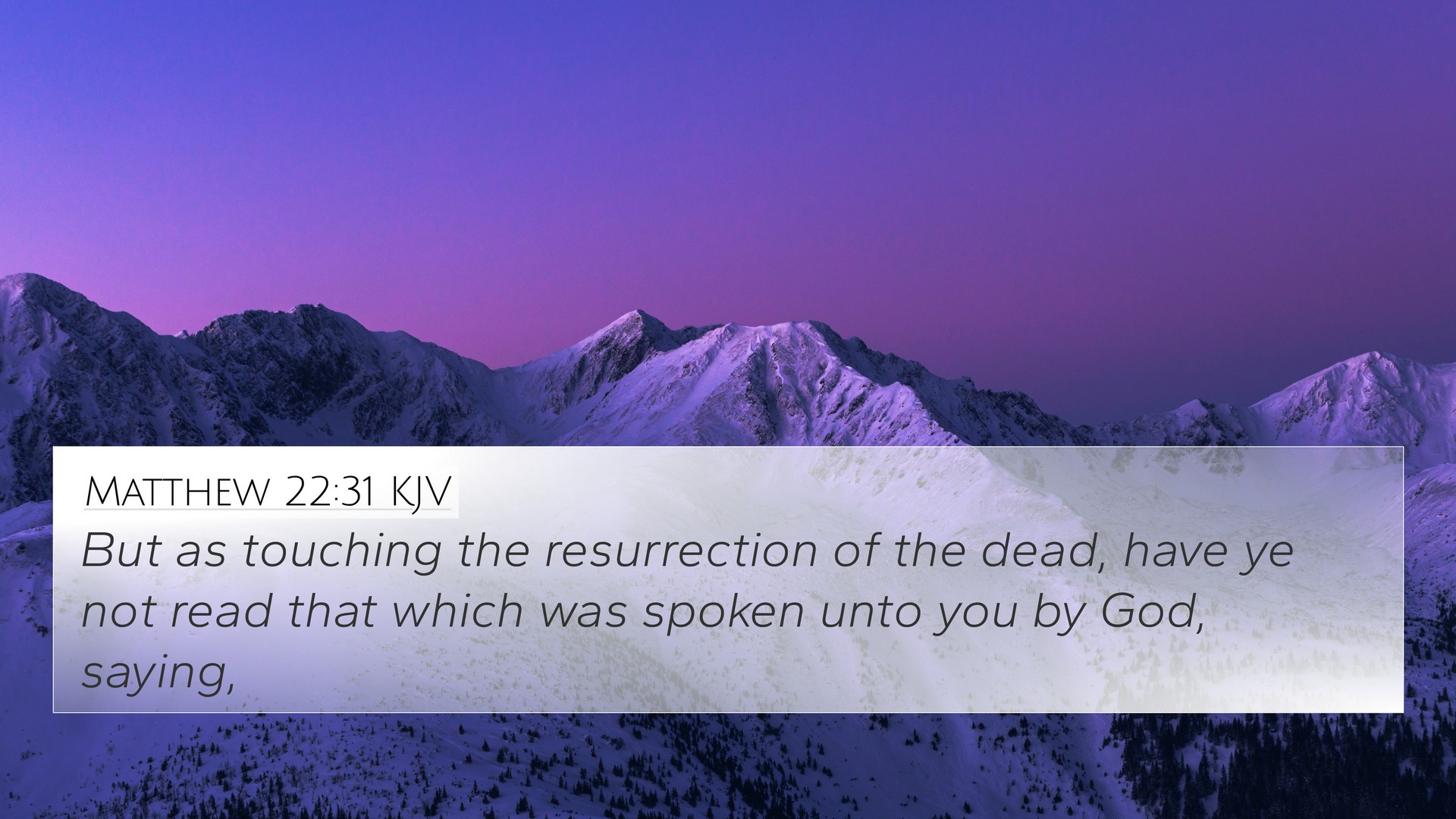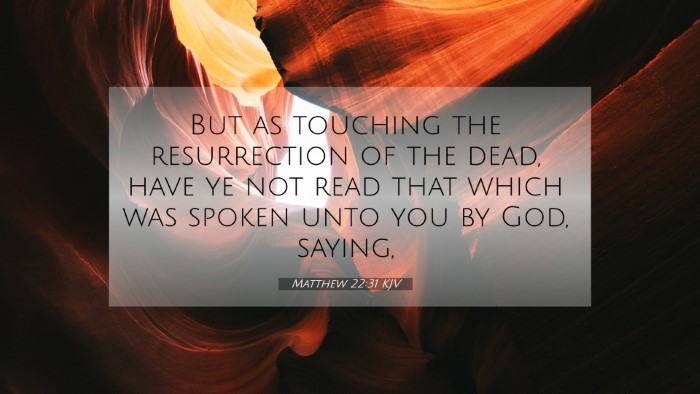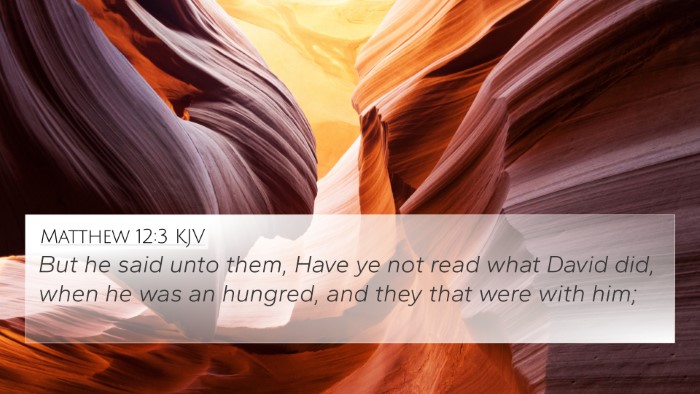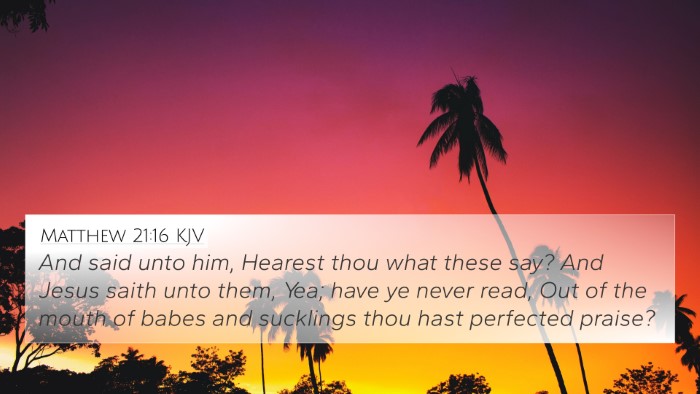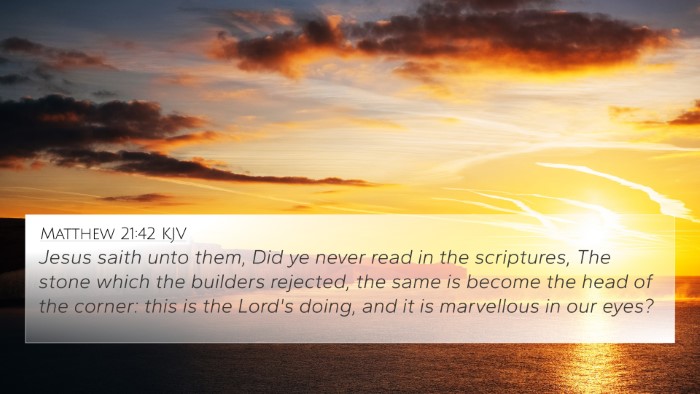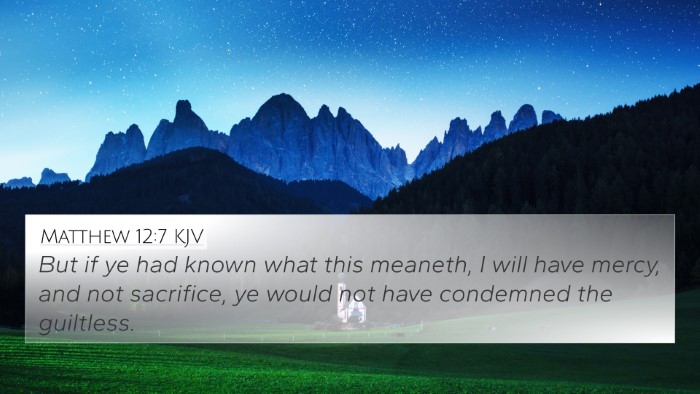Understanding Matthew 22:31
Matthew 22:31 states, "But concerning the resurrection of the dead, have you not read what was spoken to you by God, saying." This verse occurs within a larger context where Jesus is responding to the Sadducees, who questioned him about the resurrection.
Summary of Insights
The verse emphasizes the importance of Scripture as it reveals God’s truth regarding life after death. Jesus affirms the reality of the resurrection, using the authority of Scripture to challenge the Sadducees’ disbelief.
Key Themes and Meanings
- Resurrection: This verse is a critical statement on the belief in life after death, indicating that God is not the God of the dead, but of the living.
- Divine Authority: Jesus appeals to the Scriptures as the basis for his teachings. This highlights the significance of understanding biblical texts accurately.
- Scriptural Interpretation: The verse encourages careful reading and interpretation of the Scriptures, as they contain God’s revelations and truths regarding human existence.
Comparative Bible Verse Analysis
In relation to Matthew 22:31, several Bible verses can be cross-referenced to deepen the understanding of its implications about resurrection and God’s nature:
- Exodus 3:6: "Moreover He said, 'I am the God of your father, the God of Abraham, the God of Isaac, and the God of Jacob.' God is not the God of the dead, but of the living." This directly connects to the assertion of the resurrection.
- Acts 24:15: "Having hope in God, which they themselves also accept, that there will be a resurrection of the dead, both of the just and the unjust." This reinforces the New Testament perspective on resurrection.
- Romans 6:5: "For if we have been united with Him in a death like His, we will certainly also be united with Him in a resurrection like His." Paul elaborates on the resurrection, tying it to believers’ relationship with Christ.
- 1 Corinthians 15:20-22: "But in fact Christ has been raised from the dead, the firstfruits of those who have fallen asleep. For as by a man came death, by a man has come also the resurrection of the dead." This section outlines the significance of Christ’s resurrection as the foundation for the resurrection of all believers.
- John 11:25-26: "Jesus said to her, 'I am the resurrection and the life. Whoever believes in me, though he die, yet shall he live, and everyone who lives and believes in me shall never die.'" Jesus articulates his divine authority over life and death.
- Matthew 28:6: "He is not here, for he has risen, as he said. Come, see the place where he lay." This emphasizes the reality of resurrection, fulfilling Jesus' own prophecy.
- Philippians 3:10-11: "That I may know him and the power of his resurrection, and may share his sufferings, becoming like him in his death, that by any means possible I may attain the resurrection from the dead." This expresses the aspirational aspect of believers in relation to Christ's resurrection.
Tools for Bible Cross-Referencing
Using tools for Bible cross-referencing can enhance your understanding and study of Scripture. Here are some recommended methods and resources:
- Bible Concordance: A useful tool that lists words and their occurrences in the Bible, assisting in finding related verses.
- Bible Cross-Reference Guide: These guides provide references linked to specific verses, helping identify connections.
- Cross-Reference Bible Study: Engaging in studies that focus on interconnected scriptures can illuminate theological themes.
- Comprehensive Cross-Reference Materials: Utilizing extensive resources that collate various translations and their interrelations.
Identifying Connections between Bible Verses
When evaluating Matthew 22:31, one ought to consider other significant scriptures that emphasize themes of resurrection:
- Hebrews 11:17-19: This discusses Abraham’s faith in God’s promise, hinting at resurrection through the narrative of Isaac.
- 1 Thessalonians 4:16-17: Paul outlines the order of resurrection and hope for believers at Christ's return.
- Revelation 20:6: "Blessed and holy is the one who shares in the first resurrection! Over such the second death has no power." This reiterates the promise of resurrection for the holy.
Conclusion
Matthew 22:31 serves as a reaffirmation of the hope believers hold regarding resurrection and eternal life. By effectively cross-referencing this verse with others in Scripture, one can develop a richer understanding of its theological implications. The connections presented through these verses highlight the interconnected nature of the biblical narrative, urging readers to pause and reflect on the promises of God concerning life beyond the grave.
By utilizing tools for Bible cross-referencing, scholars and laypeople alike can engage in deeper study and analysis of the Scriptures, uncovering the profound truths about resurrection and the character of God.
